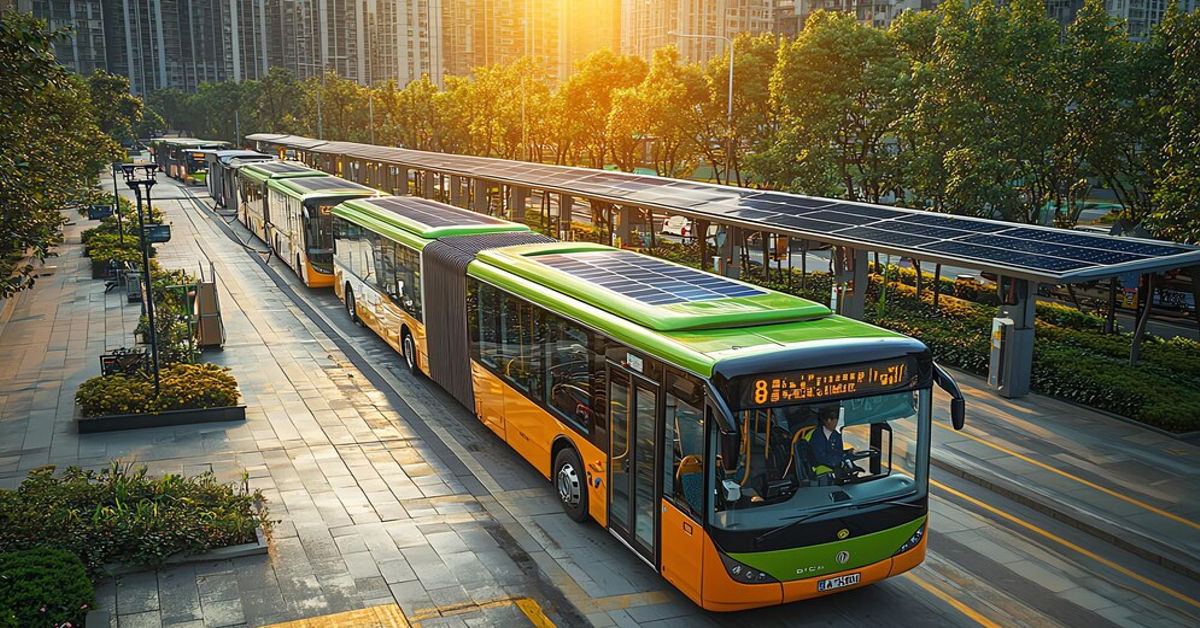In the bustling landscape of urban life, the need for transportation that is both efficient and environmentally friendly has become increasingly urgent. Cities worldwide are grappling with issues of traffic congestion, air pollution, and the demand for accessible public transit. In response to these challenges, innovative solutions are emerging, and one such groundbreaking innovation is Autobà. This autonomous bus system represents a significant leap forward in urban transportation, leveraging cutting-edge technology to revolutionize the way people commute in metropolitan areas.
What is Autobà?
The term “Autobà” combines “auto,” meaning “self” in Italian, with “bà,” a shortened form of “banchina,” which translates to “platform.” Together, these words create a name that embodies the essence of this modern transportation solution: a self-sufficient platform for urban mobility. Autobà is a sophisticated autonomous bus system designed to address the pressing challenges of urban congestion and environmental degradation.
The Birth of Autobà
The concept of Autobà emerged in response to the growing problems associated with traditional urban transportation systems. As cities expanded and populations surged, traffic congestion and air pollution reached alarming levels. Engineers and innovators recognized the need for a smarter, more sustainable approach to mobility. Thus, the development of Autobà began at the turn of the 21st century, driven by the imperative to create a transportation system that could mitigate congestion while reducing greenhouse gas emissions.
How Autobà Works
Autonomous Navigation
At the heart of Autobà’s operation is its autonomous navigation system, which relies on cutting-edge sensors, GPS technology, and AI algorithms. These technologies work in tandem to enable the buses to navigate complex urban environments safely and efficiently. By continuously analyzing their surroundings and reacting in real-time, Autobà vehicles can navigate city streets, adhere to traffic laws, and adapt to changing conditions.
Passenger Interaction
Autobà offers passengers intuitive interfaces that allow them to interact with the system seamlessly. From selecting routes to adjusting environmental settings within the vehicle, passengers have control over their travel experience. Real-time trip data is also available, enabling passengers to stay informed about their journey.
Advantages of Autobà
Alleviating Traffic Congestion
One of the most significant advantages of Autobà is its ability to alleviate traffic congestion. Through advanced traffic management technology, Autobà optimizes routes, reduces the frequency of traffic jams, and improves overall urban mobility. By rerouting vehicles dynamically, the system minimizes delays and keeps traffic flowing smoothly.
Environmental Sustainability
Autobà prioritizes environmental sustainability by utilizing electric or hybrid power sources. By transitioning away from fossil fuels, Autobà significantly reduces carbon emissions, contributing to cleaner air and a healthier urban environment. This commitment to sustainability aligns with global efforts to combat climate change and reduce reliance on non-renewable resources.
Enhanced Safety Features
Autobà sets new standards for safety in urban transportation. Its advanced sensor technology and AI-driven algorithms enable the system to detect and respond to potential hazards with precision. As a result, Autobà boasts an unprecedented level of safety, providing passengers and pedestrians with peace of mind.
The Future of Urban Transportation
Integration with Smart Cities
As cities evolve into smart, interconnected hubs of innovation, Autobà is poised to play a pivotal role in their development. The seamless integration of Autobà with existing infrastructure and future urban planning initiatives will create more efficient and sustainable cities. By leveraging data and connectivity, Autobà contributes to the realization of smart city objectives, such as reduced emissions, improved mobility, and enhanced quality of life for residents.
Potential for Expansion
With its proven effectiveness and growing popularity, Autobà has the potential for widespread adoption in cities around the world. As more municipalities recognize the benefits of autonomous transportation, they are likely to invest in implementing Autob,à systems to meet the needs of their populations. This expansion will not only alleviate congestion and pollution but also improve accessibility and equity in urban transportation.
Overcoming Challenges
Regulatory Frameworks
The widespread adoption of Autob,à will require a reassessment of current transportation legislation to ensure compliance and safety. Regulators must work closely with stakeholders to establish clear guidelines for the operation of autonomous vehicles in urban environments. By addressing legal and regulatory challenges proactively, cities can create an enabling environment for the deployment of Autob,à and similar technologies.
Technological Evolution
To remain effective in dynamic urban environments, Autob,à must continuously evolve and adapt. This requires ongoing research and development to enhance its capabilities and address emerging challenges. From improving sensor technology to optimizing AI algorithms, innovation is essential to the long-term success of Autob,à as a sustainable transportation solution.
Conclusion
Autobà represents a paradigm shift in urban transportation, offering a glimpse of a future where public transit is affordable, environmentally friendly, and easily accessible to all. By leveraging cutting-edge technology, Autobà has the potential to transform the way people move within cities, mitigating congestion, reducing emissions, and enhancing safety. Its integration with smart cities and potential for global expansion signal a new era in urban mobility.











